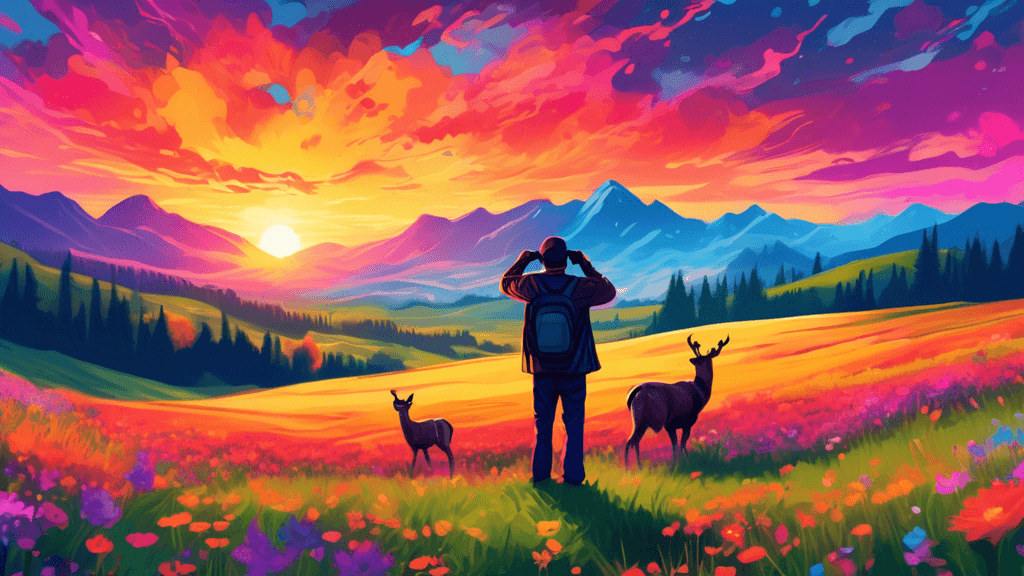
Capturing Beauty: Landscape and Wildlife Photography in New Settings
Share
Exploring the Magnetic Pull of Landscape and Wildlife Photography
For many, photography is not just a method of capturing reality but a way of interpreting and repackaging it through their unique artistic lens. Landscape and wildlife photography, in particular, offer photographers both a challenge and an extraordinary opportunity to connect with the environment on a profound level. But what does it take to thrive in these genres as you venture into new and unexplored settings?
Understanding the Essentials of Landscape Photography
Landscape photography goes beyond just taking pictures of scenic views. It is about capturing the essence and the soul of a place. To excel in landscape photography, especially in unfamiliar settings, requires a blend of technical skills and local knowledge.
- Research is key: Before venturing into a new location, it’s crucial to research the area. Understanding the geographical layout, weather patterns, and the golden hours (sunrise and sunset times) can make a significant difference in your output.
- Equipment choices: While a good camera and lens are fundamental, consider travel-friendly gear such as lighter tripods, versatile lens options, and adequate weather protection for your equipment.
- Composition techniques: Mastering the rule of thirds, leading lines, and the use of natural frames can greatly enhance the visual appeal of your landscape photos.
The landscape changes, bringing new shapes and contrasts to your compositions that are unrepeatable just a moment later. — this reflection from a seasoned photographer highlights the ephemeral beauty of nature that landscape photographers strive to capture.
Diving into Wildlife Photography
Wild Kife photography, on the other hand, adds the unpredictable element of living creatures. It requires patience, respect for the natural world, and quick reflexes. Capturing wildlife in new settings poses its own set of challenges and exhilarating rewards.
- Behavioral understanding: Knowing your subject is crucial in wildlife photography. Studying the behaviors and patterns of the animals you wish to photograph can lead to more compelling and ethically captured images.
- Right place, right time: Learning about animal habitats and migratory patterns can greatly increase your chances of a successful shoot.
- Equipment needs: A telephoto lens is almost indispensable for wildlife photography to safely capture close-up shots without disturbing the animals.
Photography is a powerful tool not just to entertain and awe, but to conserve. Every image should communicate a story that touches people and involves them in the conservation process, states an environmentalist and photographer.
Adapting to New Environments
Venturing into new photographic territories can seem daunting at first. However, the adaptation process can be simplified with certain strategic approaches:
- Local connections: Engaging with local communities and other photographers can provide insights and tips that are not available through conventional research.
- Environmental impact: Always be conscious of your impact on the natural environments you enter. Stick to trails, respect wildlife, and leave no trace.
- Continued learning: Each setting teaches something new. Reflect on your experiences and incorporate these learnings into your future expeditions.
Embracing these practices not only enhances your skill set but also deepens your appreciation of photography as an art form and a tool for environmental advocacy.
Taking Your Craft to New Heights
In the exploration of unfamiliar terrains and the captivating pursuit of wildlife in their natural habitats, photographers find not just subjects but stories, not just scenes but insights. As you prepare to capture the splendor of new landscapes or the glance of a wild animal, remember that each frame is a narrative in its own right, a single moment of connection between humanity and the vast, intricate world of nature.
In conclusion, whether you are drawn to the rugged peaks of distant mountains or the quiet corners of hidden forests, each setting offers unique challenges and rewards. What unites them is the photographer's ability to reveal the world's hidden stories and wonders through their lens.
Ready to venture into new landscapes and capture the untamed wildlife? Now is the time to grab your camera, step into nature, and tell its stories through your eyes. Every shot you take is a step towards mastering your craft and contributing to global environmental awareness.





